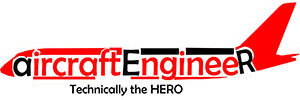Note: The scope of this Module should reflect the technology of aeroplanes pertinent to the A2 and B1.2 subcategory.
11.1 Theory of Flight
11.1.1 Aeroplane Aerodynamics and Flight Controls
Operation and effect of:
— roll control: ailerons and spoilers;
— pitch control: elevators, stabilators, variable incidence stabilisers and canards;
— yaw control, rudder limiters;
Control using elevons, ruddervators;
High lift devices, slots, slats, flaps, flaperons;
Drag inducing devices, spoilers, lift dumpers, speed brakes;
Effects of wing fences, saw tooth leading edges;
Boundary layer control using, vortex generators, stall wedges or leading edge devices;
Operation and effect of trim tabs, balance and antibalance (leading) tabs, servo tabs, spring tabs, mass balance, control surface bias, aerodynamic balance panels;
11.2 Airframe Structures — General Concepts
(a) Airworthiness requirements for structural strength;
Structural classification, primary, secondary and tertiary;
Fail safe, safe life, damage tolerance concepts;
Zonal and station identification systems;
Stress, strain, bending, compression, shear, torsion, tension, hoop stress, fatigue;
Drains and ventilation provisions;
System installation provisions;
Lightning strike protection provision.
Aircraft bonding.
(b) Construction methods of: stressed skin fuselage, formers, stringers, longerons, bulkheads, frames, doublers, struts, ties, beams, floor structures, reinforcement, methods of skinning, anti-corrosive protection, wing, empennage and engine attachments;
Structure assembly techniques: riveting, bolting, bonding;
Methods of surface protection, such as chromating, anodising, painting;
Surface cleaning;
Airframe symmetry: methods of alignment and symmetry checks.
11.3 Airframe Structures — Aeroplanes
11.3.1 Fuselage (ATA 52/53/56)
Construction and pressurisation sealing;
Wing, tail-plane pylon and undercarriage attachments;
Seat installation;
Doors and emergency exits: construction and operation;
Window and windscreen attachment.
11.3.2 Wings (ATA 57)
Construction;
Fuel storage;
Landing gear, pylon, control surface and high lift/drag
attachments.
11.3.3 Stabilisers (ATA 55)
Construction;
Control surface attachment.
11.3.4 Flight Control Surfaces (ATA 55/57) 1 2 —
Construction and attachment;
Balancing — mass and aerodynamic.
11.3.5 Nacelles/Pylons (ATA 54)
(a) Nacelles/Pylons:
— Construction;
— Firewalls;
— Engine mounts.
11.4 Air Conditioning and Cabin Pressurisation (ATA 21)
Pressurisation and air conditioning systems;
Cabin pressure controllers, protection and warning devices.
11.5 Instruments/Avionic Systems
11.5.1 Instrument Systems (ATA 31)
Pitot static: altimeter, air speed indicator, vertical speed indicator;
Gyroscopic: artificial horizon, attitude director, direction indicator, horizontal situation indicator, turn and slip indicator, turn coordinator;
Compasses: direct reading, remote reading;
Angle of attack indication, stall warning systems.
Other aircraft system indication.
11.5.2 Avionic Systems
Fundamentals of system lay-outs and operation of:
— Auto Flight (ATA 22);
— Communications (ATA 23);
— Navigation Systems (ATA 34).
11.6 Electrical Power (ATA 24)
Batteries Installation and Operation;
DC power generation;
Voltage regulation;
Power distribution;
Circuit protection;
Inverters, transformers.
11.7 Equipment and Furnishings (ATA 25)
(a) Emergency equipment requirements;
Seats, harnesses and belts.
(b) Cabin lay-out;
Equipment lay-out;
Cabin Furnishing Installation (level 2);
Cabin entertainment equipment;
Galley installation;
Cargo handling and retention equipment;
Airstairs.
11.8 Fire Protection (ATA 26)
(a) Fire extinguishing systems;
Fire and smoke detection and warning systems;
System tests.
(b) Portable fire extinguisher.
11.9 Flight Controls (ATA 27)
Primary controls: aileron, elevator, rudder;
Trim tabs;
High lift devices;
System operation: manual;
Gust locks;
Balancing and rigging;
Stall warning system.
11.10 Fuel Systems (ATA 28)
System lay-out;
Fuel tanks;
Supply systems;
Cross-feed and transfer;
Indications and warnings;
Refuelling and defuelling.
11.11 Hydraulic Power (ATA 29)
System lay-out;
Hydraulic fluids;
Hydraulic reservoirs and accumulators;
Pressure generation: electric, mechanical;
Pressure Control;
Power distribution;
Indication and warning systems.
11.12 Ice and Rain Protection (ATA 30)
Ice formation, classification and detection;
De-icing systems: electrical, hot air, pneumatic and chemical;
Probe and drain heating;
Wiper systems.
11.13 Landing Gear (ATA 32)
Construction, shock absorbing;
Extension and retraction systems: normal and emergency;
Indications and warning;
Wheels, brakes, antiskid and autobraking;
Tyres;
Steering.
11.14 Lights (ATA 33)
External: navigation, anti collision, landing, taxiing, ice;
Internal: cabin, cockpit, cargo;
Emergency.
11.15 Oxygen (ATA 35)
System lay-out: cockpit, cabin;
Sources, storage, charging and distribution;
Supply regulation;
Indications and warnings;
11.16 Pneumatic/Vacuum (ATA 36)
System lay-out;
Sources: engine/APU, compressors, reservoirs, ground supply;
Pressure control;
Distribution;
Indications and warnings;
Interfaces with other systems.
11.17 Water/Waste (ATA 38)
Water system lay-out, supply, distribution, servicing and
draining;
Toilet system lay-out, flushing and servicing;
Corrosion aspects.
